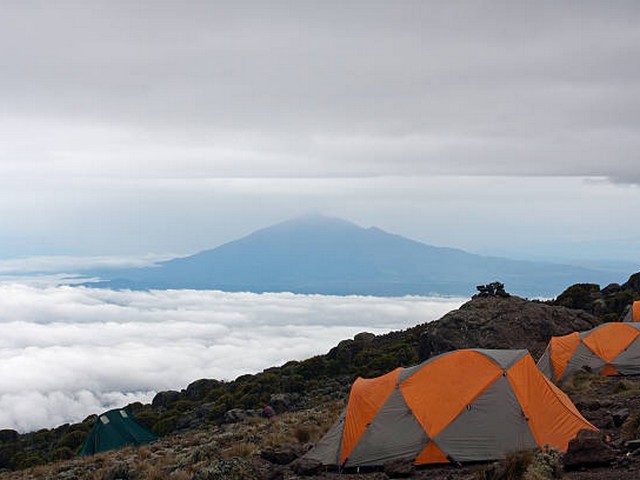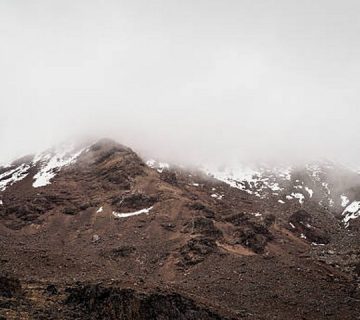Kilimanjaro Trekking Health and Fitness Guide: Prepare for the Adventure of a Lifetime
Embarking on a journey to Mount Kilimanjaro is not just about fulfilling the dream of reaching the peak; it’s about embracing an adventure that tests your body and spirit. Here at the Kilimanjaro Centre for Trekking and Ecotourism (KCTE), we understand that a successful summit requires more than just enthusiasm. It demands careful preparation, particularly in terms of health and fitness. In this comprehensive guide, we’ll walk you through essential tips and strategies to ensure you’re physically and mentally ready for the challenge of Kilimanjaro.
Why Health and Fitness Matter on Kilimanjaro
Climbing Mount Kilimanjaro, the highest free-standing mountain in the world and Africa’s tallest peak, is no ordinary feat. Your body will be pushed to new limits as you trek through multiple climate zones, from tropical rainforests to arctic conditions at the summit. Adequate preparation in terms of health and fitness not only increases your chances of reaching Uhuru Peak but also ensures a safer and more enjoyable experience.
Beginning Your Fitness Regime
Start Early
Ideally, your training should begin at least 6 months before your trek. This gives your body ample time to adapt to new stresses and increases your endurance.
Cardiovascular Conditioning
Focus on building your cardiovascular endurance. Activities like jogging, cycling, and swimming are excellent for increasing heart health and lung capacity. Remember, on the mountain, you’ll be trekking for about 5 to 7 hours a day; stamina is key.
Strength Training
Kilimanjaro’s trek involves long walks and steep climbs, often while carrying a backpack. Regular strength training, targeting your legs, core, and upper body will make these tasks more manageable. Incorporate exercises such as squats, lunges, pull-ups, and deadlifts into your routine.
Altitude Training
If possible, train in high-altitude areas to acclimate your body to reduced oxygen levels. Alternatively, consider using an altitude training mask to simulate high-altitude conditions.
Nutrition and Hydration: Fueling Your Climb
Balanced Diet
Adopt a nutritious diet rich in carbohydrates, proteins, and healthy fats to boost your energy reserves. Carbohydrates are particularly crucial as they are your body’s primary energy source during extended periods of physical activity.
Hydration
Staying hydrated is critical. Dehydration at high altitudes can lead to altitude sickness and impair physical and mental functions. Aim to drink at least 3-4 liters of water daily during your trek.
Supplements
Discuss with a healthcare provider about supplements like Iron, Vitamin C, and Magnesium which could be beneficial for high-altitude trekking.
Mental Preparation: The Psychological Aspect
Climbing Kilimanjaro is as much a mental challenge as it is physical. Prepare yourself mentally by setting realistic goals, maintaining a positive mindset, and being mentally ready to face discomfort. Techniques such as meditation or visualization can also be very helpful.
Choosing the Right Gear
Footwear
Invest in a good pair of waterproof, broken-in hiking boots to prevent blisters and provide adequate support.
Clothing
Layering is key. Pack moisture-wicking base layers, insulating layers, and a waterproof outer layer to handle Kilimanjaro’s varying temperatures.
Accessories
Don’t forget essentials like a high-quality backpack, a sleeping bag suitable for low temperatures, sunglasses, a hat, and sunscreen.
Health Checks and Consultations
Medical Clearance
Get a full medical check-up to ensure you’re fit for the climb. Discuss any pre-existing conditions with your doctor which might affect your ability to trek.
Vaccinations and Medications
Ensure that all your vaccinations are up to date, and ask your doctor about preventive medications for altitude sickness.
Training Schedules and Techniques
Develop a consistent training schedule that gradually increases in intensity. Include long walks in your routine, preferably on hilly terrain, and practice hiking with a backpack that’s close to the weight you’ll be carrying on Kilimanjaro.
Why Choose KCTE for Your Kilimanjaro Adventure
At Kilimanjaro Centre for Trekking and Ecotourism (KCTE), we are not just committed to helping you reach the summit; we ensure your journey is safe, enjoyable, and memorable. Our expert guides, comprehensive health and fitness preparation support, and commitment to ecotourism make us the best choice for your Kilimanjaro expedition.
Frequently Asked Questions
Q: How fit do I need to be to climb Kilimanjaro?
A: While you don’t need to be an elite athlete, a good level of fitness is necessary. You should be able to handle several hours of walking for consecutive days.
Q: What is the best time of year to climb Kilimanjaro?
A: The best times are during the dry seasons, from January to mid-March and from June to October.
Q: Can I climb Kilimanjaro if I have a medical condition?
A: Many people with controlled medical conditions can successfully summit Kilimanjaro. However, it’s crucial to consult your doctor and discuss your specific circumstances.
Q: How long does it take to acclimate to high altitude?
A: Acclimatization varies, but it generally takes a few days to adjust to high altitudes. Choosing a longer route can aid in better acclimatization.
Q: What are the chances of experiencing altitude sickness?
A: The risk varies, but following a sensible acclimatization schedule and staying hydrated can significantly reduce your chances.
Ready for the Challenge?
Preparing for a Kilimanjaro trek is no small task, but with the right approach and guidance from KCTE, you’ll be stepping onto the roof of Africa before you know it. Embrace the journey with the confidence that comes from thorough preparation. Connect with us at KCTE today to start planning your adventure and to learn more about how we can help turn your Kilimanjaro dream into reality. Climb with us, where every step counts towards a greater understanding of this majestic mountain and yourself. Join us for an unforgettable climb!




